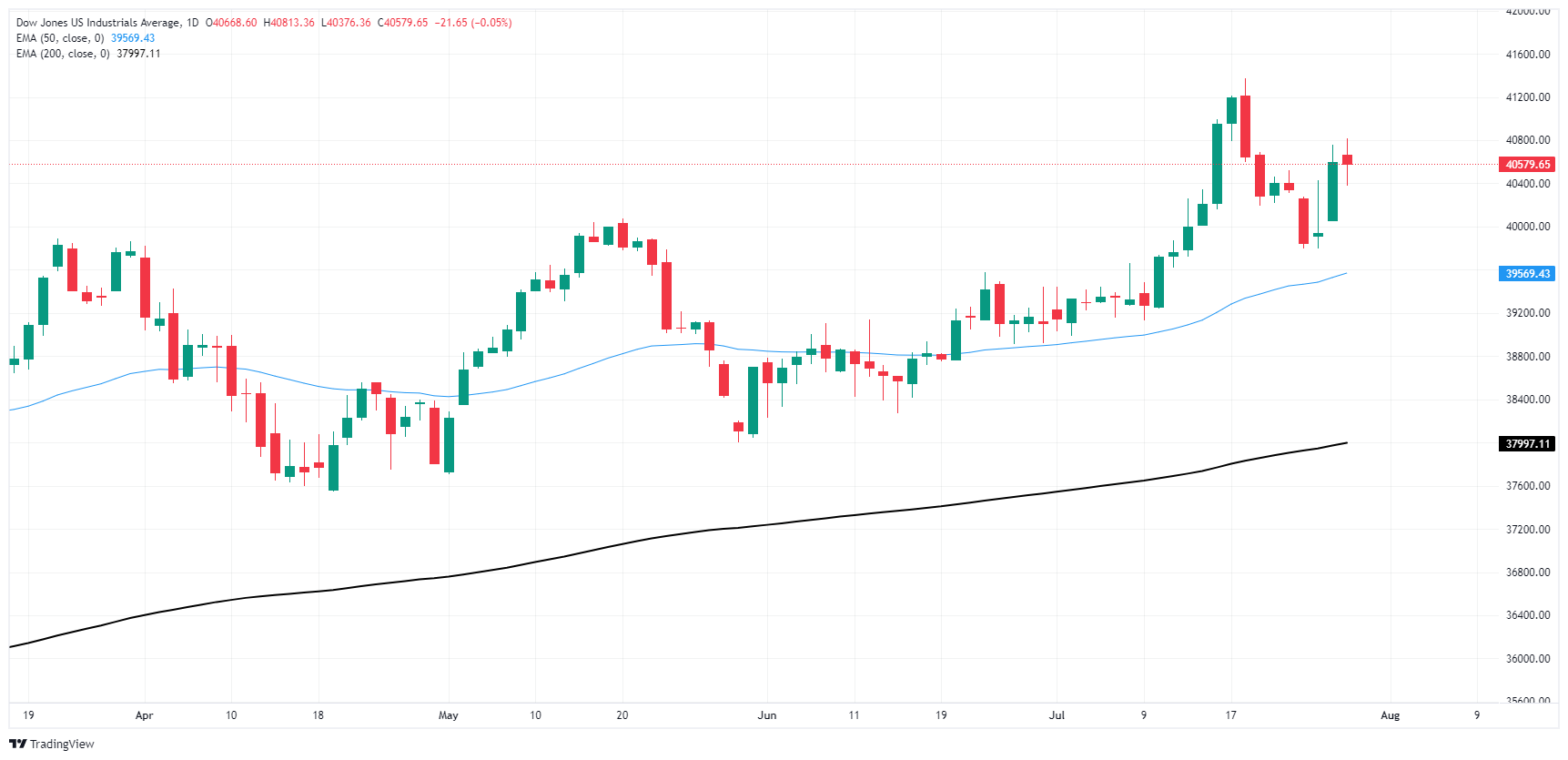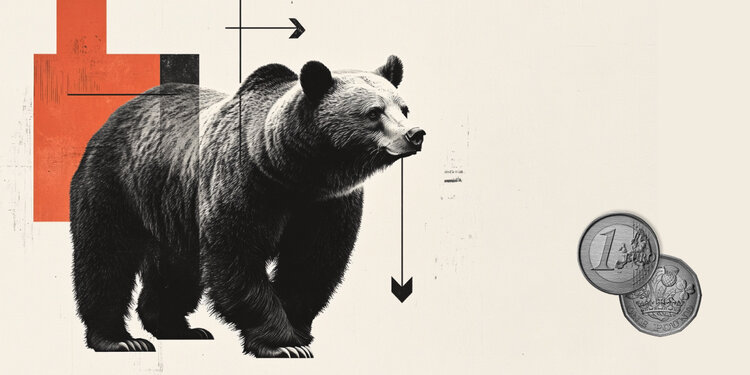- Dow Jones swings as investors jostle for positions ahead of Fed meeting
- The Fed will keep rates unchanged this week, markets watch for future guidance.
- Investors have fully priced in a rate cut in September.
The Dow Jones Industrial Average (DJIA) spun in circles on Monday, hovering around 40,600.00 as investors brace for the wait for the Federal Reserve’s (Fed) latest rate decision. The Fed is widely expected to keep rates unchanged on Wednesday, but markets will be watching for any adjustments to forward guidance ahead of the all-important September rate decision.
The Fed’s upcoming rate decision on Wednesday will be closely watched as investors look for signs that the Fed is on track to deliver a long-awaited rate cut when the Federal Open Market Committee (FOMC) meets again in September. Markets are widely anticipating at least a quarter-point rate cut on Sept. 18, with rate markets pricing in a 90% chance of a 25 basis point cut and 10% hopeful bets for a double cut according to the CME’s FedWatch tool.
US Non-Farm Payrolls (NFP) are also due out on Friday, a key component of the Fed’s employment mandate and investors will be looking for a continued slowdown in hiring numbers to help push the Fed towards a new rate cut cycle in September. ADP Employment Change figures for July are due out on Wednesday and will serve as a forecast for Friday’s NFP jobs report, albeit with a spotty track record of accuracy.
Dow Jones News
The Dow is stuck in the middle of a range amid quiet trading Monday, with about half the index in the green for the day and the other half moving lower toward the lower end. McDonald’s Inc. (MCD) reported a drop in quarterly revenue and earnings per share, but shares rose 4.4% and soared above $263.00 per share as the company vows to make more efforts to compete by taking a “forensic look” at pricing choices and expects restaurant traffic to rise with the addition of value offerings.
Dow Jones Technical Outlook
The Dow Jones is holding steady near the 40,600.00 area on Monday, oscillating in a tight range during the day as investors struggle to maintain a foothold in the short-term recovery. The DJIA briefly fell below the important 40,000.00 price zone last week after US markets pulled back from record highs.
The Dow Jones firmed to set a new short-term low near 37,395.00, but is still trading on the lower side of the recent all-time highs set at 41,371.38. The long-term momentum is still leaning firmly towards the bullish side as the Dow Jones is trading well above the 200-day Exponential Moving Average (EMA) at 38,011.80.
Dow Jones daily chart
The Dow Jones FAQs
The Dow Jones Industrial Average, one of the world’s oldest stock market indexes, is made up of the 30 most actively traded stocks in the United States. The index is weighted by price rather than capitalization. It is calculated by adding up the prices of the component securities and dividing by a factor, currently 0.152. The index was founded by Charles Dow, also founder of the Wall Street Journal. In recent years it has been criticized for not being sufficiently representative, as it only tracks 30 companies, unlike broader indexes such as the S&P 500.
There are many factors that drive the Dow Jones Industrial Average (DJIA). The main one is the aggregate performance of the companies that comprise it, as revealed in quarterly corporate earnings reports. US and global macroeconomic data also contribute, as they influence investor confidence. The level of interest rates, set by the Federal Reserve (Fed), also influences the DJIA, as it affects the cost of credit, on which many companies rely heavily. Therefore, inflation can be a determining factor, as well as other parameters that influence the decisions of the Federal Reserve.
Dow Theory is a method for identifying the major trend of the stock market developed by Charles Dow. A key step is to compare the direction of the Dow Jones Industrial Average (DJIA) and the Dow Jones Transportation Average (DJTA) and only follow trends where both move in the same direction. Volume is a confirmation criterion. The theory uses elements of peak-trough analysis. Dow Theory posits three phases of a trend: accumulation, when smart money starts buying or selling; public participation, when the general public joins the trend; and distribution, when smart money leaves the trend.
There are several ways to trade the DJIA. One is to use ETFs that allow investors to trade the DJIA as a single security, rather than having to buy shares of all 30 companies that comprise it. A prominent example is the SPDR Dow Jones Industrial Average ETF (DIA). Futures contracts on the DJIA allow traders to speculate on the future value of the index, and options provide the right, but not the obligation, to buy or sell the index at a predetermined price in the future. Mutual funds allow investors to purchase a portion of a diversified portfolio of DJIA securities, providing exposure to the overall index.
Source: Fx Street
I am Joshua Winder, a senior-level journalist and editor at World Stock Market. I specialize in covering news related to the stock market and economic trends. With more than 8 years of experience in this field, I have become an expert in financial reporting.








